I was able to peel the layers apart on this strip fairly easily (no chemicals, just a razor blade to start)
Sample area:
Contact area:
Here it is after peeling layers off:
Sample area:
Contact area:
This is what I believe the circuit is:
Corrections are below the picture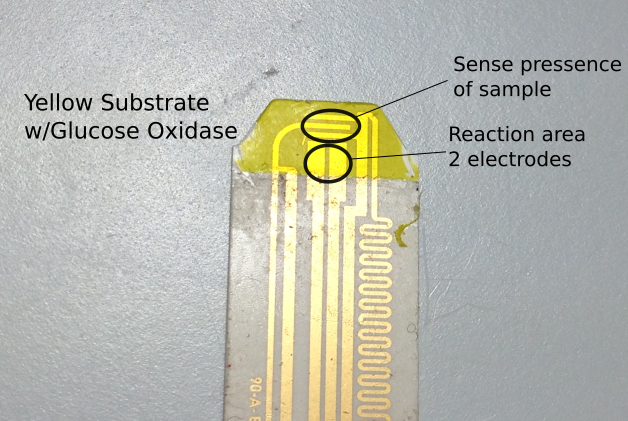
**Sense electrodes are actually the Working and Counter Electrodes**
**Reaction electrodes are actually the Fill Detection Electrodes.**
Oops - my marked up version of the contact area is gone. Well, suffice to say this strip seems to be designed to used to electrodes - 1 active and 1 reference. There are 2 more electrodes for sensing when blood is applied to the strip. There are 8 contacts at the base of the strip, each of the 4 electrodes branches into 2 contacts. I'm not certain of the function of the serpentine route of the sense electrode on the right (it also has a solid straight track to the left of it) - I have some ideas but I'll need to test further.
To help make the process of strip dissection easier (I've been using an inexpensive low power binocular microscope) I decided to hack together a video microscope. I looked at some projects involving USB camera but decided that I liked the idea of a composite security camera board (I've got a few from old projects - I've also got a few USB cameras). Some people complained that USB camera's didn't update in real time.
I cut a small box for the camera board, mounted it in there. Added an acrylic piece to the top of the box, with a 1/2" hole drilled through it, to accept a 1/2" rod. Lenses I took from optics I've saved from camcorders (other projects), and an old lcd screen pulled from a portable DVD player. In the end I came up with this:
It's not pretty (right now) but it achieves fairly good magnification and should make it much easier to look at strips.
 Tom Meehan
Tom Meehan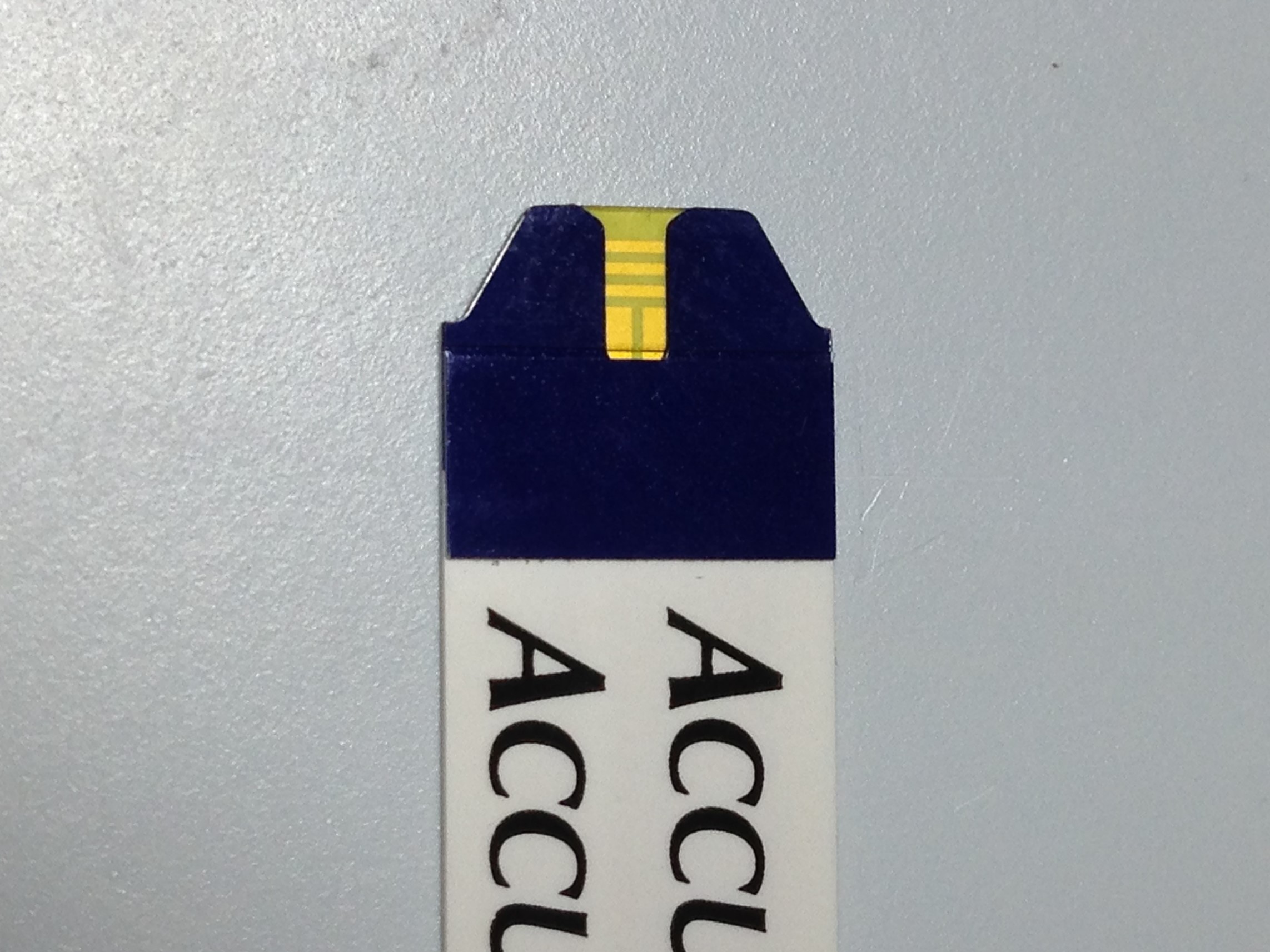
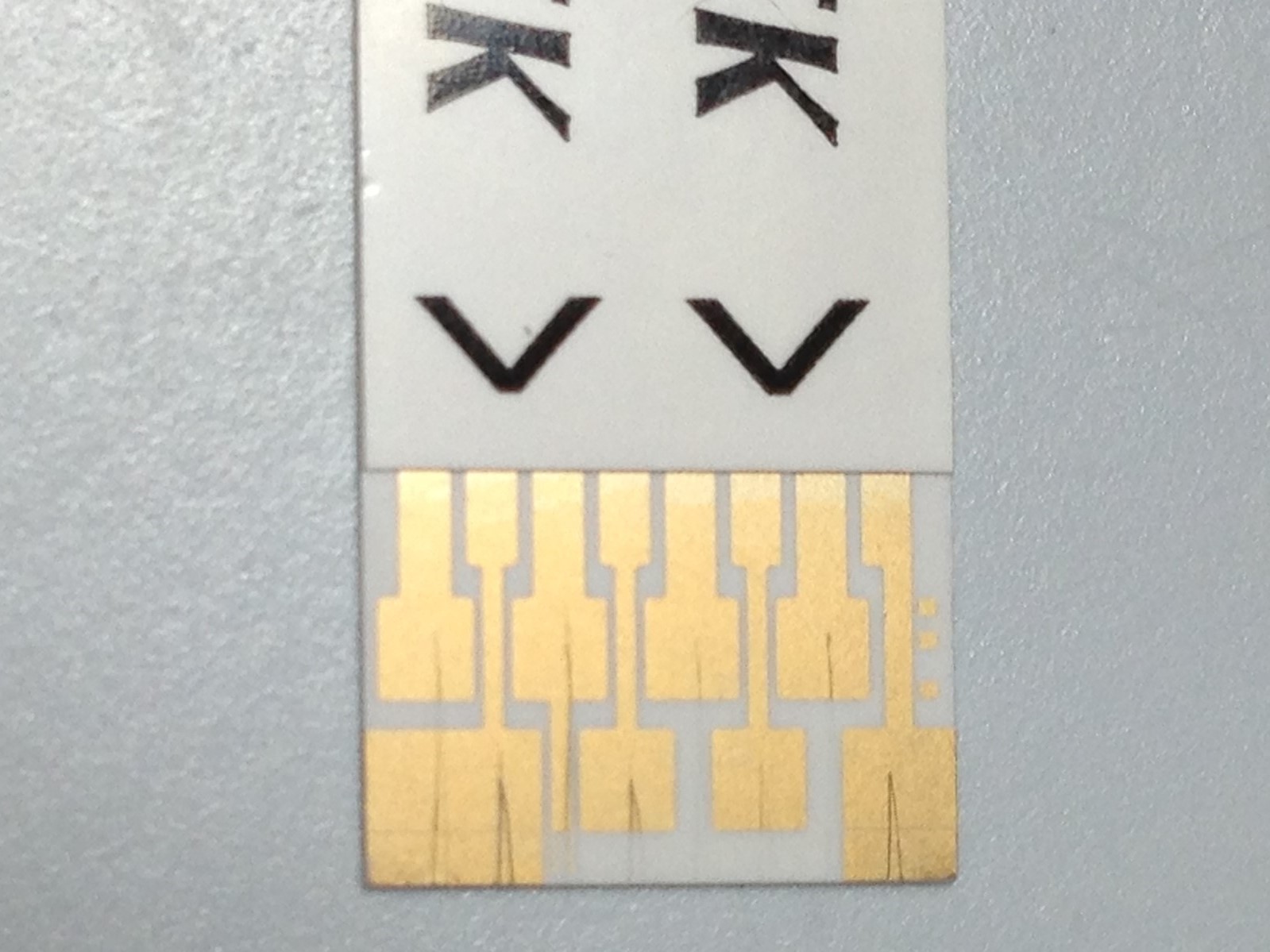
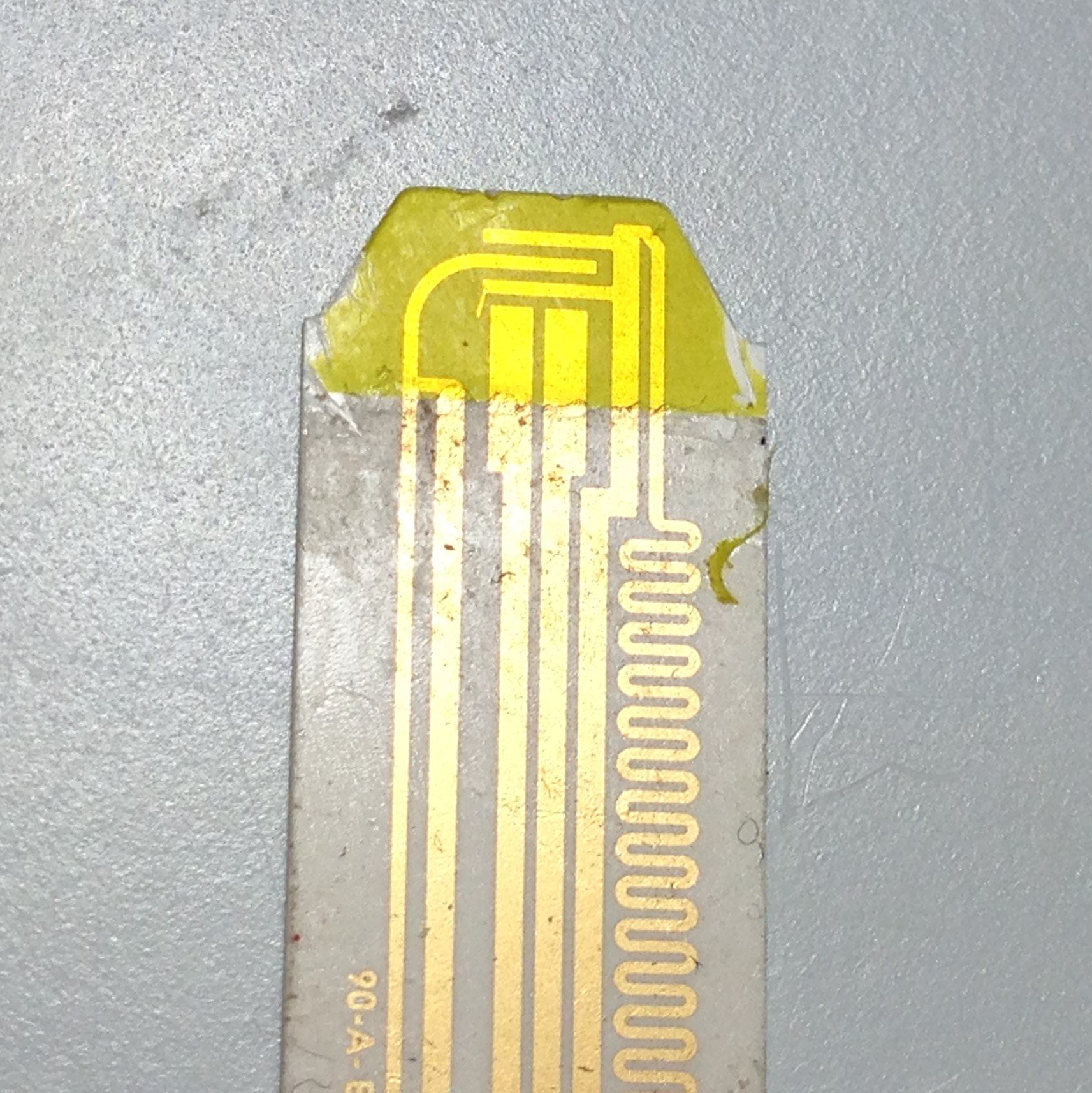
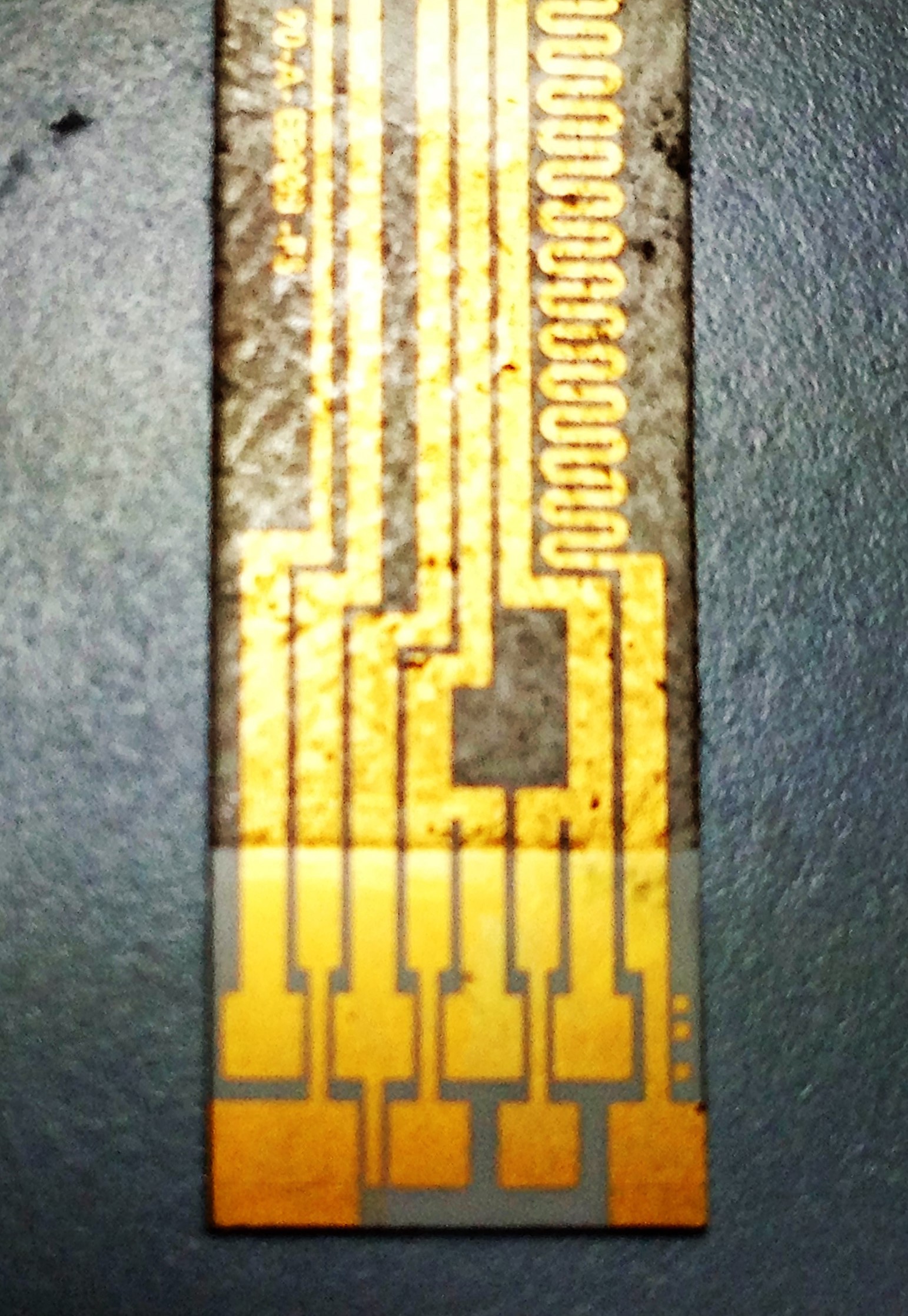
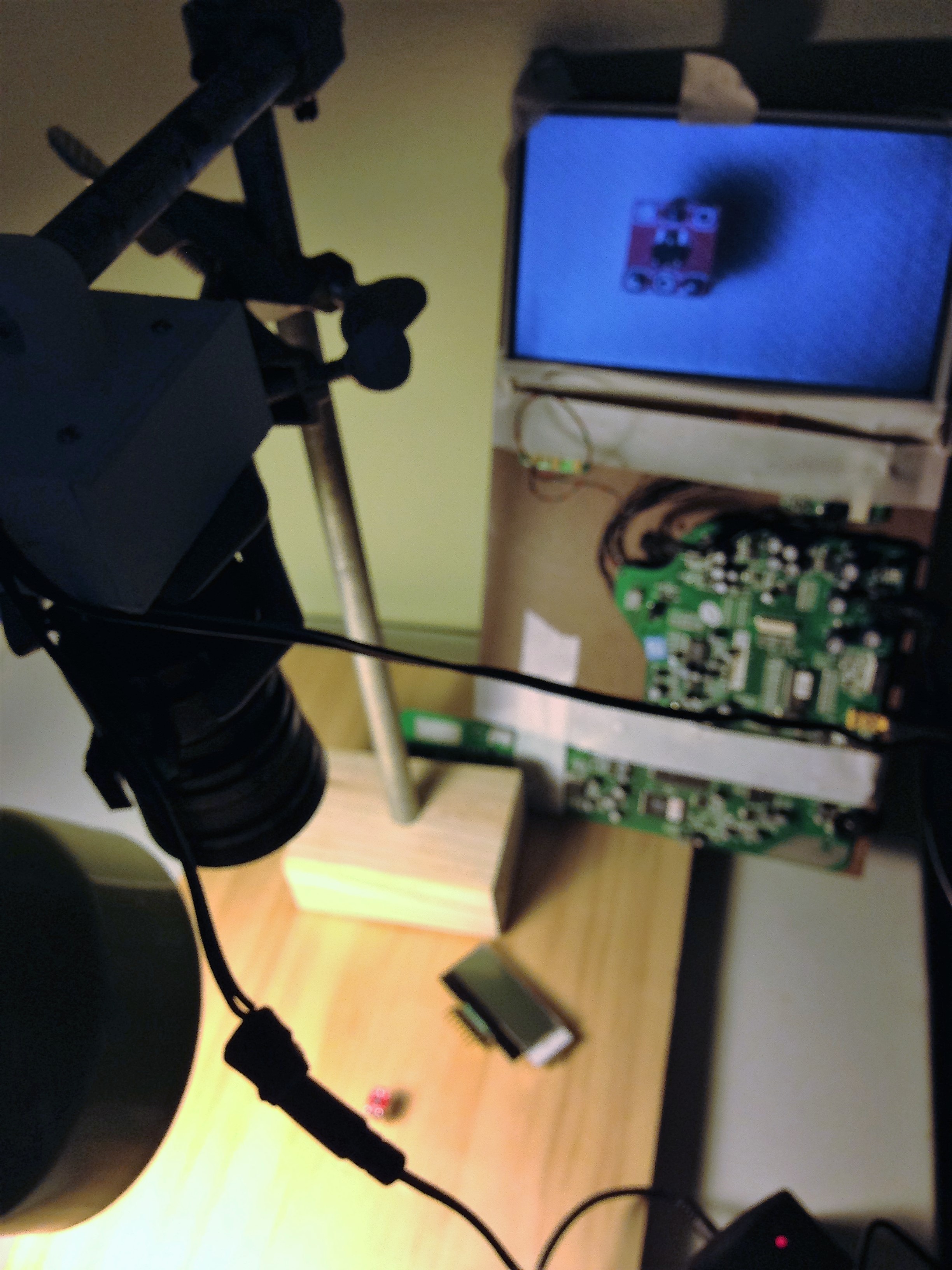
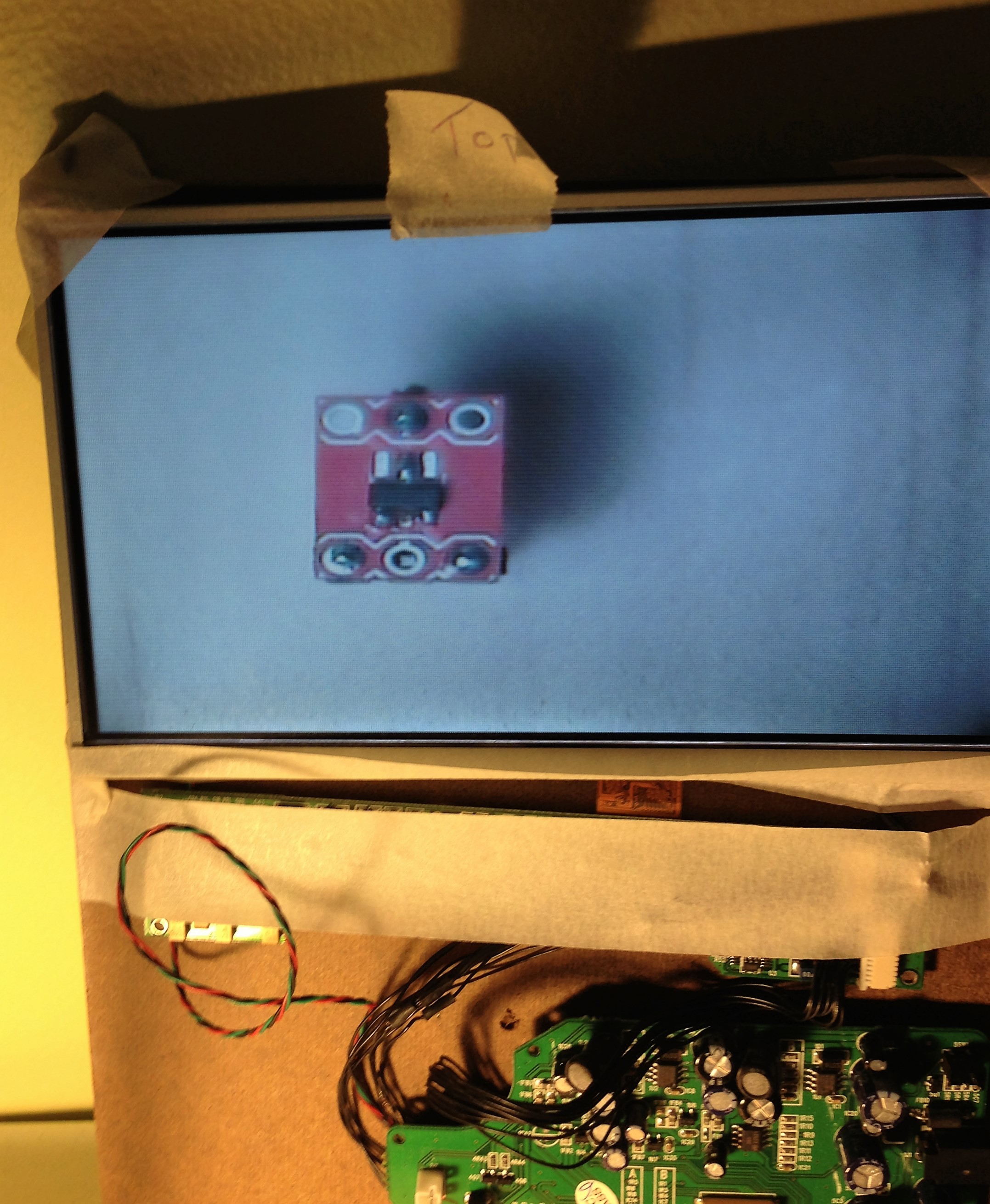
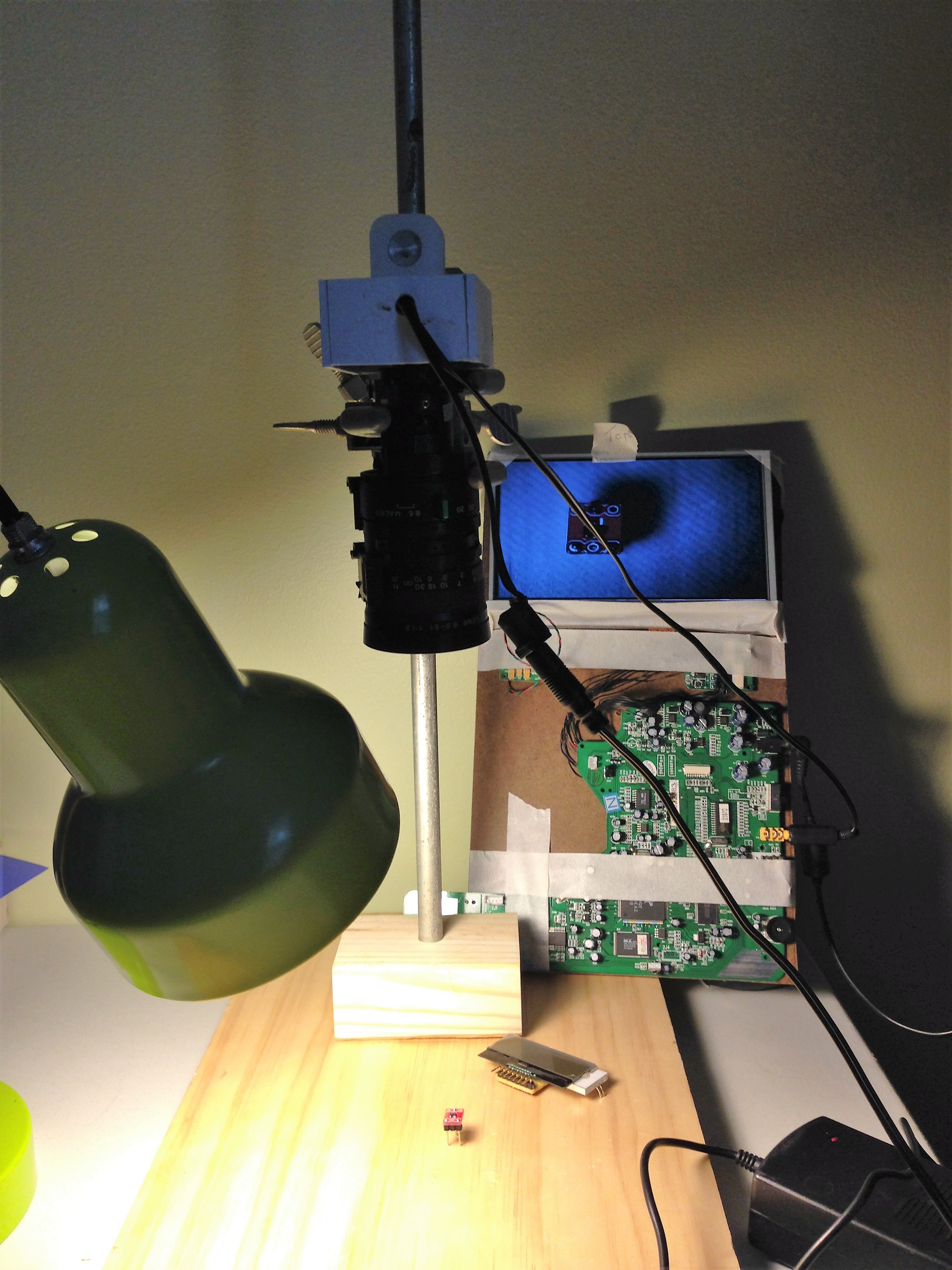
Discussions
Become a Hackaday.io Member
Create an account to leave a comment. Already have an account? Log In.